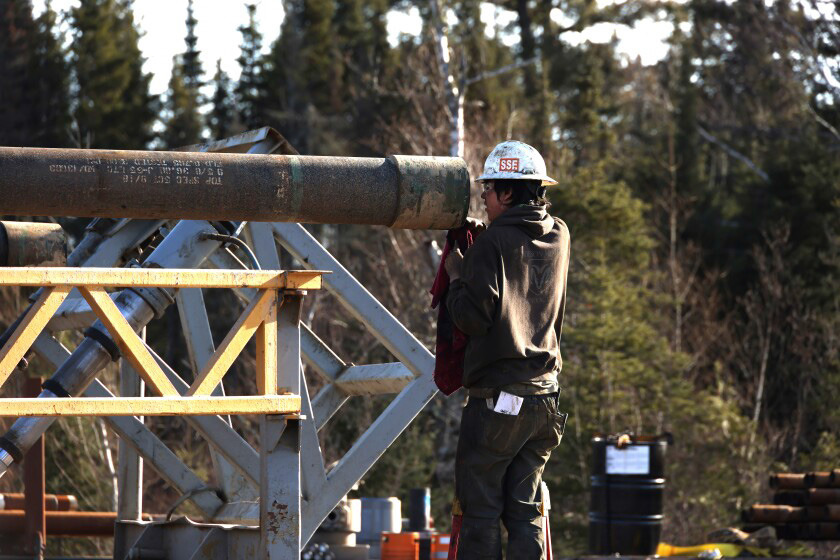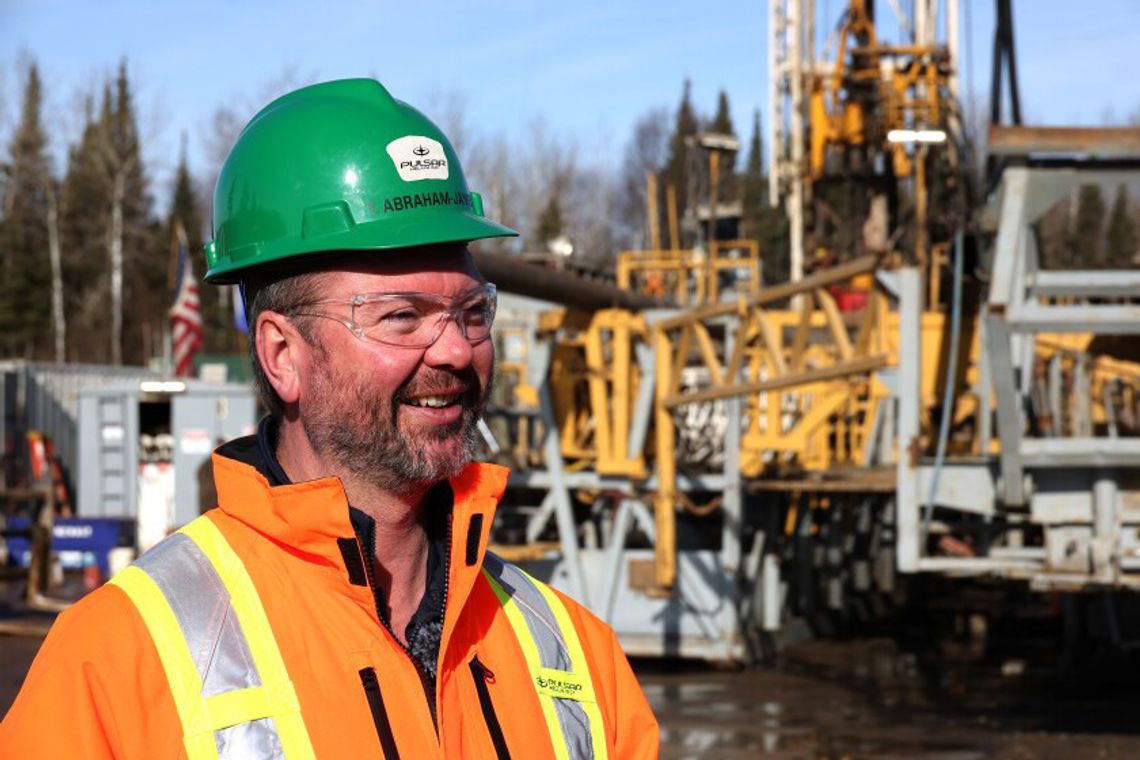Confirmation of a rich pocket of helium deep beneath Northeastern Minnesota’s forest floor this winter has spurred state officials and legislators to create regulations for the fledgling industry.
Because Minnesota does not have a natural gas or oil extraction industry, existing rules don’t account for the production of other gases like helium or hydrogen. And in light of helium’s confirmation beneath the ground in an area between Babbitt and Isabella, geologists and exploration companies believe more could exist in the region, thanks to underground fissures created 1.1 billion years ago during the Midcontinent Rift, which may also make it a prime location for hydrogen.
State Sen. Grant Hauschild, DFL-Duluth, introduced a bill last month to begin oversight and rulemaking of the industry, and Rep. Dave Lislegard, DFL-Aurora, introduced a House version of the bill last week.
In February, British Columbia- based Pulsar Helium obtained samples from 1,750 and 2,200 feet below the surface at its Topaz drill site between Babbitt and Isabella. Laboratory tests have since confirmed that the samples contain up to 13.8% helium, far above the 0.3% concentration considered of economic interest.
There’s a shortage of helium, which is used in everything from magnetic resonance imaging (MRI) machines, semiconductor manufacturing, and leak testing to air tanks for medical patients and deep-sea divers, and the aerospace and defense industries.
Since helium is often a byproduct of the oil and natural gas industry, the hydrocarbon-free source discovered in Minnesota is attractive for Pulsar, which is conducting a feasibility study on the potential to commercially produce helium from the well.
“While this is an exciting opportunity, without a framework our local communities, our schools and our residents will not see the benefits,” Hauschild said in a news release earlier this month. “It’s important to get this right and ensure that our communities in northern Minnesota receive the net benefits of this newly discovered deposit.”
If it becomes law, the bill would allow companies to lease state land and explore it, generating money for the Minnesota school trust. Currently, exploration is only allowed on private land.
But the bill would prohibit commercial production of gases until a permit is approved, said Joe Henderson, director of the Minnesota Department of Natural Resource’s division of land and minerals.
“So what it says, basically, is that you couldn’t go into commercial production until you have a permit, and a permit would then cover things like pooling and making sure that you’re not drawing pools of resources from under your neighbor’s property without an agreement to pay them,” Henderson said.
Aaron Klemz, chief strategy officer for the Minnesota Center for Environmental Advocacy, put it another way.
“We don’t want a rush where folks are trying to identify a few small, private parcels that they can stick a straw into and then drink everyone else’s milkshake,” Klemz said. “That’s the risk if you have those rules in place.”
Klemz said his group supports the bill, as amended, because it ensures the DNR gains regulatory authority over the industry. The rulemaking process that will follow the bill becoming law can help establish standards for dealing with methane waste gases and the transportation of the gases, he said.
Henderson said the bill would require the DNR to develop temporary permit rules the Minnesota Legislature would consider next year. The agency would then enter a public rulemaking process to develop final rules for the industry.
Pulsar President and CEO Thomas Abraham-James said the company appreciates the bill.
“We welcome the introduction of the bill and look forward to continuing our work with the state and people of Minnesota on this exciting new development,” Abraham- James said in a statement.
Klemz said the MCEA has been trying to make sure the bill’s “core” remains “the DNR getting that authority and coming up with rules to regulate this industry.”
The House version of the bill still includes language that would also begin ruling on carbon sequestration (using rocks to store carbon), keeping it out of the atmosphere. But much of that has been amended out of the Senate version of the bill, which would still commission a report exploring possible future carbon sequestration legislation.

.jpg)












